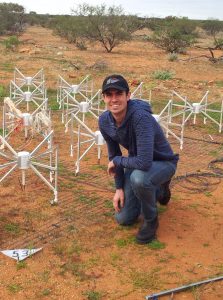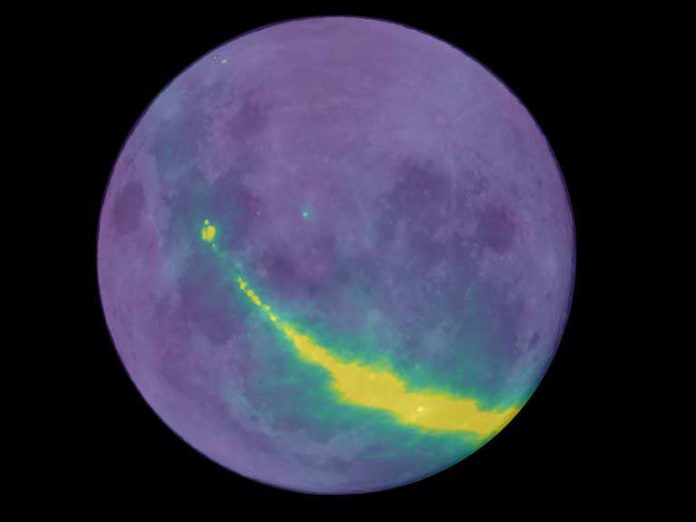A team of astronomers led by Dr Benjamin McKinley at Curtin University node of the International Centre for Radio Astronomy Research (ICRAR) and the ARC Centre of Excellence for All-Sky Astrophysics in 3 Dimensions (ASTRO 3D) observed the Moon with a radio telescope to help search for the faint signal from hydrogen atoms in the infant Universe.
Scientists describe how they have used the Murchison Widefield Array (MWA) radio telescope to help search for radio signals given off by the hydrogen atoms.
He said, “Before there were stars and galaxies, the Universe was pretty much just hydrogen, floating around in space. Since there are no sources of the optical light visible to our eyes, this early stage of the Universe is known as the ‘cosmic dark ages.”
In a new study, astronomers describe how they have used the Murchison Widefield Array (MWA) radio telescope to help search for radio signals given off by the hydrogen atoms.
Dr. McKinley said that in your car radio, you can tune into various channels and the radio waves are converted into sounds.

“The radio telescope, the Murchison Widefield Array (MWA) which is located in the Western Australian desert far away from earth-based FM radio stations, takes the radio signals from space and which we can then convert into images of the sky.”
This radio signal from the early Universe is exceptionally powerless contrasted with them to a great degree bright objects in the closer view, which incorporate accumulating black holes in different systems and electrons in our very own Milky Way.
The way of taking care of this problem is having the capacity to accurately gauge the normal brightness of the sky.
Notwithstanding, built-in effects from the instruments and radio frequency impedance make it difficult to get precise perceptions of this exceptionally faint radio signal.
In this work, the astronomers utilized the Moon as a source of the perspective purpose of known brightness and shape.
This enabled the group to gauge the brilliance of the Milky Way at the situation of the occulting Moon. The space experts additionally considered ‘earthshine’— radio waves from Earth that reflect off the Moon and back onto the telescope.
Earthshine defiles the signal from the Moon and the group needed to expel this tainting from their examination. With more perceptions, the cosmologists plan to reveal the hydrogen signal and put hypothetical models of the Universe to the test.
The work is published in Monthly Notices of the Royal Astronomical Society.
